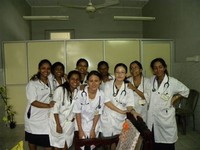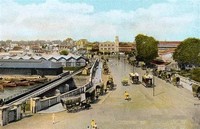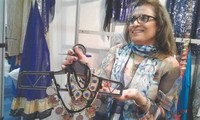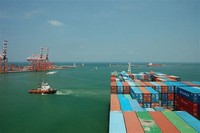Facts about Colombo

Due to its large harbor and its strategic position, Colombo has been a seaport for more than 2,000 years.

Several old clubs, including the Orient Club, the 80s Club, and the Colombo Cricket Club, give a glimpse of the British lifestyle.

Colombo's most beautiful festival is the celebration of Buddha's birth, enlightenment and death, which takes place in mid-May and lasts a week.

Arabian Muslims whose prime interests were trade, began to settle in Colombo around the eighth century C.E., mostly because the port controlled much of the trade between the Sinhalese kingdoms and the outside world.

The Colombo Medical School and the Colombo Law College were established in the 1870s.

John Macdowell of the Madras Service was the first to hold the office of "collector" to administer Colombo.

Construction of the Colombo Metro Rail, a Mass Rapid Transit railway system, similar to that of other advanced Asian cities, had begun by 2008.

The Legislative Council of Ceylon constituted the Colombo Municipal Council in 1865 and the council first met on January 16, 1866.

Colombo's situation is intricately tied to that of Sri Lanka; its situation will improve hand in hand with that of its nation.

Colombo's central bus stand and the Fort Railway Station functions as the island's hub for bus and rail transport.

The port of Colombo was rated as one of the top 35 ports in the world by 2008.

The name Colombo, introduced by the Portuguese in 1505, is believed to be derived from the classical Sinhalese name Kolon thota, meaning "port on the river Kelani.

Colombo is the largest city and commercial capital of Sri Lanka, and is home to many of the national governmental institutions.

In 1978, when administrative functions were moved to nearby Kotte, Colombo kept its position as Sri Lanka's commercial capital.

The Portuguese founded a fort at Colombo in 1517 and gradually extended control over the coastal areas.

Colombo is the most populated city in Sri Lanka, with 642,163 people living within the limits of this multi-ethnic, multi-cultural city.

Colombo's manufacturing focuses on processing of raw materials for export.

The University of Colombo and the University of the Visual and Performing Arts are state universities located in Colombo, while the Sri Lanka Institute of Information Technology has a metropolitan campus there.

The Colombo Metropolitan Region (CMR) encompasses the country's administrative capital Sri Jayawardanapura Kotte and Colombo, which has a mayor-council form of government with elections held once in five years.

Colombo (Sinhala: , pronounced ; Tamil: ????????) is the largest city and commercial capital of Sri Lanka.

Colombo was the capital of the coastal areas controlled by the Portuguese, Dutch, and the British from the 1700s to 1815 when the British gained control of the entire island following the Kandian convention.

The northern and northeastern border of the city of Colombo is formed by the Kelani River.

Almost all major media businesses in Sri Lanka operate from Colombo.

The National Museum of Colombo, established in 1877, houses the crown jewels and throne of the last king of the Kingdom of Kandy, Sri Vikrama Rajasinha.

On April 5, 1942, the Japanese Navy bombed Colombo and LSSP leaders were able to escape.

The city of Colombo was established as the island's administrative center, and the British established modern schools, colleges, roads and churches that brought Western education and culture to the native people.

The Dutch Hospital, now the Colombo Dutch Museum, is the oldest building in the fort area.

Colombo has two international cricket stadiums, the Sinhalese Sports Club's cricket stadium and R. Premadasa Stadium.

The Ceylon University College was established in 1913, followed by the formation of the University of Ceylon, which had a campus in Colombo.

The Colombo port, which dates back to the fourteenth century, was expanded after 1948 with the construction of the Queen Elizabeth Quay, 16 alongside berths, transit sheds, and warehouses.




